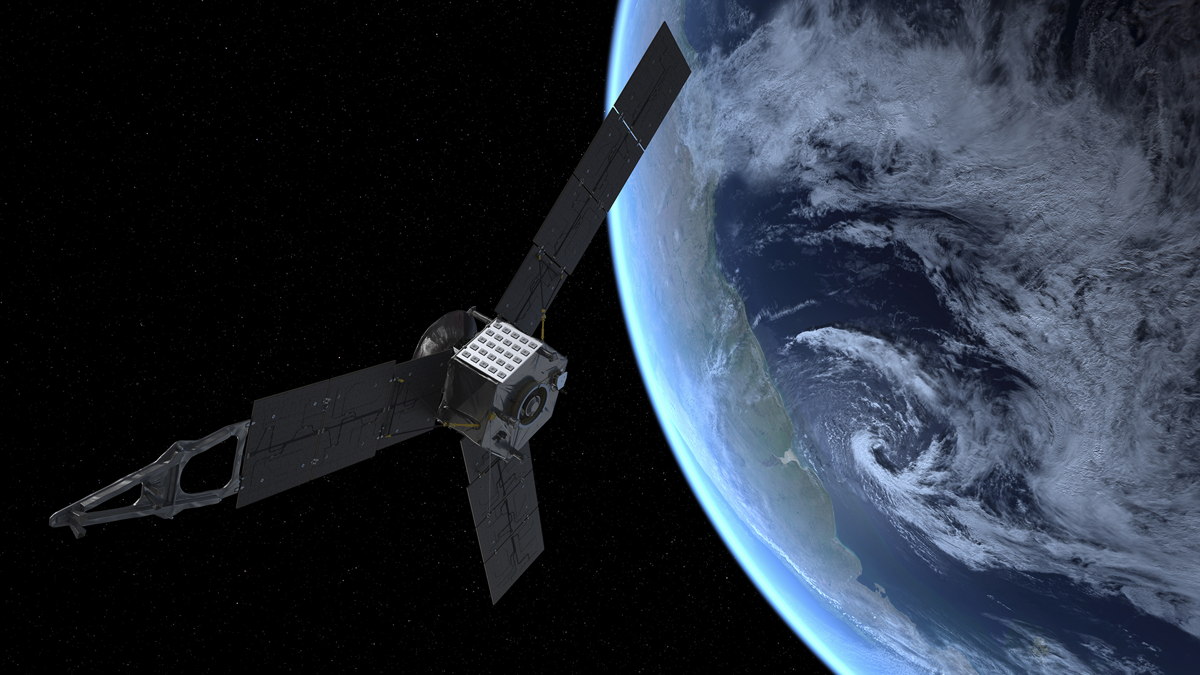NASA Jupiter Probe Still In 'Safe Mode' After Earth Flyby Glitch

A NASA Jupiter probe remains in a protective "safe mode" two days after completing a speed-boosting flyby of Earth, but mission officials have expressed confidence that the issue will be solved soon.
NASA's Juno spacecraft detected an anomalous condition and went into safe mode Wednesday afternoon (Oct. 9), just 10 minutes after making its closest approach to Earth in a slingshot maneuver designed to build momentum for the long trip to the solar system's largest planet.
The probe's handlers are still trying to figure out what exactly happened, but they suspect a minor glitch rather than a big mission-threatening problem. [Gallery: NASA's Juno Mission to Jupiter]
"We have a couple of candidates," said Juno principal investigator Scott Bolton, of the Southwest Research Institute in San Antonio. "None of them suggest a serious problem, and we haven't seen any indication that there is a serious problem."
The main goal of the flyby was achieved despite the glitch, and Juno is now on the proper trajectory to Jupiter, Bolton added.
The Juno spacecraft is in a healthy and stable state, with its tractor-trailer-size solar panels pointed toward the sun. The mission team is in communication with Juno and has seen no sign of any failures in the probe's subsystems or components, said project manager Rick Nybakken of NASA's Jet Propulsion Laboratory in Pasadena, Calif.
So Juno's handlers plan to take their time and do a thorough investigation before attempting to bring all of the spacecraft's systems back online.
Breaking space news, the latest updates on rocket launches, skywatching events and more!
"There's nothing that’s rushing us to do this, so we might as well be very careful and do our homework, and just, say, turn everything on nice and slow," Bolton told SPACE.com. "We're not missing anything that we need right now, and we're on our way safely to Jupiter."
The Juno team is already going through the probe's engineering data, as well as the science observations and images captured during the flyby, Nybakken said. All off this information should have been received by Thursday evening (Oct. 10), barring any transmission issues, he added.
"So we're looking at that data, and we're starting to develop a plan to bring the spacecraft back into operational status," Nybakken told SPACE.com. "Developing that plan will probably take us over the weekend."
The $1.1 billion Juno mission launched in August 2011 and is slated to arrive in orbit around Jupiter in July 2016. Once there, the probe will circle the gas giant for a full Earth year, studying Jupiter's atmosphere, gravitational field and magnetic field with nine science instruments.
Juno is so heavy — about 8,000 pounds (3,267 kilograms) — that it needed a post-liftoff speed boost to get to Jupiter, so mission managers decided to get a "gravity assist" from Earth.
Wednesday's flyby, which was highlighted by a close approach that brought Juno within just 347 miles (558 kilometers) of Earth at 3:21 p.m. EDT (1921 GMT), was designed to ramp the probe up from 78,000 mph to 87,000 mph (126,000 to 140,000 km/h).
While boosting Juno's speed was the main goal, mission team members also planned to check out Juno's science instruments and take some photos of the Earth-moon system during the flyby. The glitch caused some data to be lost, but the team should end up getting the vast majority of it, Bolton said.
"I expect we'll have some cool images and a cool movie and all that to release," he said.
Follow Mike Wall on Twitter @michaeldwall and Google+. Follow us @Spacedotcom, Facebook or Google+. Originally published on SPACE.com.

Michael Wall is a Senior Space Writer with Space.com and joined the team in 2010. He primarily covers exoplanets, spaceflight and military space, but has been known to dabble in the space art beat. His book about the search for alien life, "Out There," was published on Nov. 13, 2018. Before becoming a science writer, Michael worked as a herpetologist and wildlife biologist. He has a Ph.D. in evolutionary biology from the University of Sydney, Australia, a bachelor's degree from the University of Arizona, and a graduate certificate in science writing from the University of California, Santa Cruz. To find out what his latest project is, you can follow Michael on Twitter.
